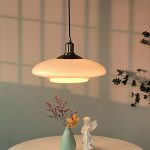Introduction
Scandinavian design, also known as Scandi design, has gained worldwide popularity due to its timeless elegance and simplicity. It is characterized by clean lines, functionality, and minimalist aesthetics. This article aims to explore the classic Scandi design pieces that have stood the test of time and continue to inspire designers and homeowners alike.
Origins of Scandi Design
Scandi design emerged in the early 20th century in Finland, Norway, and Sweden. It was a response to the Art Nouveau movement that was dominating Europe at that time. Scandinavian designers were inspired by traditional craftsmanship and the beauty of natural materials.
Key Elements of Scandi Design
Scandi design is characterized by several key elements that make it unique and timeless:
Minimalism
Scandi design is rooted in minimalism. It is all about using the bare essentials and eliminating anything that is unnecessary. Clean lines and simple shapes are essential features of Scandi design.
Natural Materials
Scandi design celebrates natural materials such as wood, leather, and wool. The focus is on the beauty of the material itself, rather than on ornate decorations.
Functionality
Scandi design is highly functional. Every piece of furniture or accessory is designed with a purpose in mind. Form follows function in every aspect of Scandi design.
Classic Scandi Design Pieces
The Egg Chair
The Egg Chair was designed by Danish architect and designer Arne Jacobsen in 1958. It is a perfect example of Scandi design’s emphasis on clean lines and functionality. The chair’s fluid shape and organic curves make it both comfortable and visually appealing.
The PH Lamp
The PH Lamp, designed by Danish designer Poul Henningsen, is another iconic Scandi design piece. It is a pendant lamp that provides soft, diffused light. The lamp’s innovative design uses multiple shades to create a warm, comfortable glow.
The Wishbone Chair
The Wishbone Chair, also known as the Y Chair, was designed by Danish designer Hans J. Wegner in 1949. It is a perfect example of Scandi design’s focus on natural materials. The chair’s seat and back are made of woven paper cord, while the frame is made of solid wood.
Scandi Design Today
Scandi design continues to influence designers and homeowners today. Many contemporary designers incorporate the key elements of Scandi design into their work, creating pieces that are both functional and visually appealing.
IKEA
IKEA, the Swedish furniture retailer, is perhaps the most well-known proponent of Scandi design. Their furniture and home accessories embody the clean lines, natural materials, and functionality that define Scandi design.
Marimekko
Marimekko is a Finnish design company that is known for its bold, colorful textiles. Their designs are characterized by simple, graphic patterns that are both modern and timeless.
Conclusion
Scandi design’s timeless elegance and simplicity have made it a favorite of designers and homeowners for over a century. Classic pieces such as the Egg Chair, PH Lamp, and Wishbone Chair continue to inspire us today. Scandi design’s focus on minimalism, natural materials, and functionality is as relevant today as it was when it first emerged in the early 20th century.






